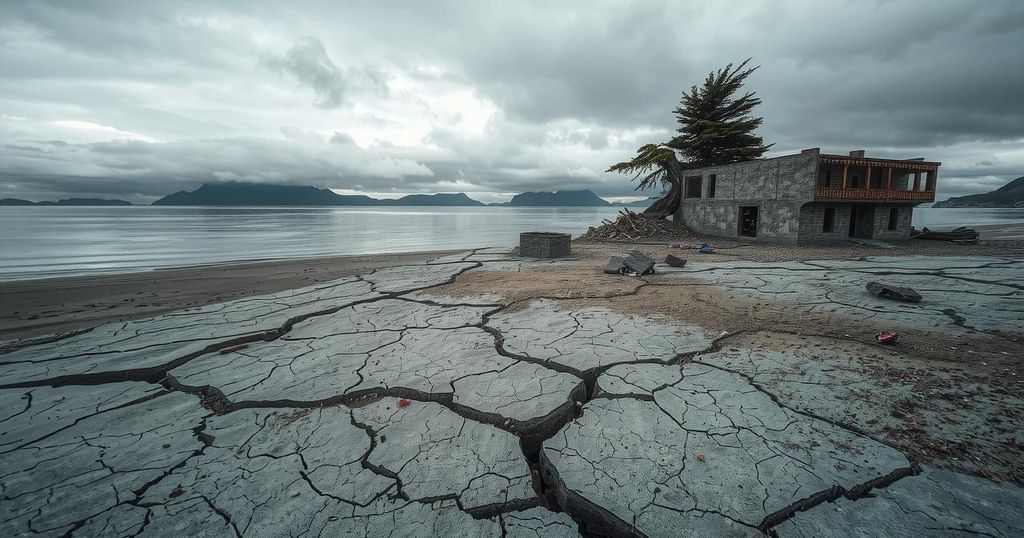Santorini has faced over 10,000 earthquakes in two weeks, leading to widespread evacuations, with most residents fleeing to the mainland. The local government declared a state of emergency and has introduced measures to support employees. The island’s safety concerns amplify due to poorly situated luxury hotels on unstable volcanic soil, highlighting the urgency of addressing ongoing seismic activity.
An unusual series of earthquakes has left the Greek island of Santorini largely deserted, as the typically bustling tourist destination has experienced over 10,000 tremors in two weeks. The most powerful quake, registering at 5.3 on the Richter scale, struck late Monday, triggering widespread evacuations and fears of potential disaster in a historically seismic area. Shops, restaurants, and schools are boarded up, and most residents have fled to the mainland for safety, with only a handful of tourists remaining to enjoy the haunting beauty of the deserted island.
Residents have been seen leaving Santorini in droves, boarding boats and ferries as authorities ramp up services to accommodate the exodus of approximately 11,000 individuals who have left in the past week. The island’s population of 15,000 is shrinking rapidly due to concerns about aftershocks and the uncertainty surrounding future seismic events. Despite the tremors, some tourists have chosen to stay, expressing their desire to experience the unique island setting, with one stating, “This place is amazing, really beautiful.”
While many residents are understandably worried, some older individuals express a sense of familiarity with the seismic activity. Retired local resident Panagiotis Hatzigeorgiou shared, “Older residents are used to the earthquakes, but it is different this time. It is not the same to have earthquakes every two to three minutes.” At the same time, hospitals have been preparing for emergencies, conducting evacuation drills to ensure readiness for a more severe quake.
Geological experts have raised alarms regarding the risks posed by structures built on the island’s unstable volcanic soil. Professor Dimitris Papanikolaou from the University of Athens noted that the ongoing construction should have considered the innate dangers of the environment. Many luxury accommodations now precariously perched on cliffs amplify concerns amid continuous seismic activity, with the professor asserting, “Nothing should have been built in this zone; it is a danger zone for as long as the seismic activity lasts.”
In response to the crisis, the Greek government has rolled out measures to temporarily support those employed on Santorini. Workers can have contracts suspended until March 3 without layoffs, ensuring job preservation in a tourism-reliant economy. Compensation will be provided to those whose contracts are temporarily halted, amounting to €534 ($445), emphasizing the government’s commitment to local livelihoods during this tumultuous period.
In summary, the dramatic increase in seismic activity on Santorini has resulted in significant evacuations and extensive concerns about safety and evacuation readiness. With a substantial portion of the population having left, and many businesses shuttered, the local economy faces a considerable challenge. The government has stepped in to provide support to the remaining residents; however, the future of the island’s tourism sector remains uncertain amidst ongoing geological risks.
Original Source: www.independent.co.uk






